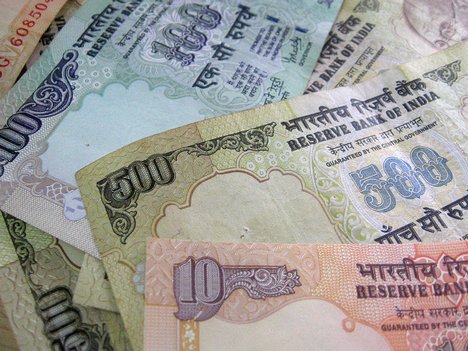“Can you buy that for me?” he asked with his eyes wide open. I turned to find my seven-year-old boy staring at a huge remote-controlled car. “No, my dear,” I said after looking at the price tag. “I don’t have that much money.” “So let’s go to the ATM and take out money. There is one around the corner,” said sonny boy offering the best solution he could think of.
Ah! The innocence of childhood; if only things were so simple, I wished. But that incident got me thinking. Where had he learnt this from? Obviously the fact that one could draw money from an ATM was something that I never taught him consciously. Rather, it was something he had learnt from observation. This set me thinking, why hadn’t I discussed money with him ever before?
I taught him how many planets there were and how many times they circumambulated the sun but never thought of teaching him anything about something that would circumambulate his adult life.
Money was never discussed at home. Why, I began to wonder.
“Don’t worry about money. Just let me know what you want and I will get it for you if I think it is good enough for you.” This was what I grew up with and I realised it was the same idea I had begun to transmit to him.
The not so recent movie ‘Tara Rum Pum’( starring Saif Ali khan and Rani Mukherji) dealt with a family that went from being ‘well to do’ to ‘not so well to do’ over time. But the parents refused to discuss financial problems with their children and made them believe that their change of residence was part of their participation in a reality show.
Adults in India don’t discuss money with children.
Why?
Money has been culturally worshipped in our country. Devi Lakshmi symbolises money. She signifies fortune, riches and splendour. Having given money the halo of divinity, we have sent it into the realm of the Gods; the realm of the unknown. The fear of the unknown always haunts man. Culturally we believe that money corrupts: money is seen as inciting greed and jealousy. Money is the cause for conflict between members of a family. We see so many instances of brothers fighting over money and property around us. We see families disintegrating over money.
As parents, most of us have been traditionally hesitant to touch upon the concept of Personal Finance. Money management and its associated concepts are never discussed in front of children. We behave like ostriches here. We try to retain the innocence of our children by keeping them away from something as troublesome as money.
In today’s world, money management is not just an important life skill; it is a life saving skill. With corporates paying huge amounts as salaries and the younger generation making more money than ever, isn’t it the responsibility of the adult world to teach the little ones how to handle money? Every year we are churning out a huge number of adults who don’t know what to do with the money they earn. They don’t know how to invest it or they just do not understand economics. Think about it –are we creating a generation of capable adults?
Schools can play a very important role in this by making a conscious effort to revisit their curricula and ensure they bring in Personal Finance as a topic discussed in class. They teach business concepts of profit, loss, banking and interest in Grades 7 and 8. They also bring in Economics as a subject in Grade 9. But they reach the macro ignoring the micro. They teach children business without the basic skills of personal money management. Personal Finance needs to be detached from socio-cultural values and talked about without any taboo. Money need not have a halo. It needs to be deconstructed. Schools can introduce the concept of money even as early as grade 4 and progressively teach the relevant concepts in higher grades.
How do people earn money? What makes money go round? Why do we have to pay for things? How does the government decide how much money to print? Why can’t we print money at home? What is the stock market? How does one invest there? How does the price of petrol and diesel impact every other price? Why is everything dependent on the price of gold? What will happen when the gold reserves end? If the Reserve Bank has all the reserves what will it be called when all the reserves are finished? The “Without Reserve’ Bank? These are questions that plague many an inquisitive kid. To give children a taste of managing money, schools can connect with banks and get children to open bank accounts. Life skill classes can deal with budgeting pocket money and allocation of resources.
Grades 5 to 8 could deal with business transactions, stock markets, investments and personal finance management. How does money roll in the stock market? What are bulls and bears doing in the stock market? What are share prices? Where can I buy a share? Who sells them? Who is a stock broker? How can I double my money? In how many years will I be able to afford a farm house? This is the stuff that can give ambition a road map. Schools need to not just infuse ambition in students but need to equip them with the tools to walk the talk.
Parents too must encourage discussions about money at home. Children can be given budgets. Whether it is a birthday gift or a party, let them decide what they want and manage it within the given budget. Pocket money is a good idea; while many parents don’t want to give pocket money because they feel that children will not handle it properly, it is important that parents realize this will teach children not to just handle money but also get a sense of responsibility. It doesn’t stop with giving money, though; as adults we need to teach them to allocate their resources wisely too. Children need to know that money is not only for spending but can also be used to create more money. Parents should encourage them to invest money in accounts and then possibly turn it into a fixed deposit later on.
As children grow into teenagers, they can be taught to earn their own money. Small chores around the house could be made into jobs that they get paid for. This gives them the incentive to share work at home and also make some money. This is not to say that children will pitch in only when paid. While keeping away from falling into that trap, parents should be able to use it as a tool to lure them to do chores at home and teach them to manage their phone bills, ice-cream parties and movie tickets on the money earned. Notice that most children are very careful with their pocket money. They will automatically cut on spending because now it is their ‘own’ money. This slowly turns into a habit and they imbibe within them the art of money management. This will teach them to respect hard earned money.
The concept of money management is not new in the western society. Summer jobs are very common. Teenagers are in fact encouraged to earn money during their vacations. Amy Chua in her book, ‘The Battle Hymn of the Tiger Mother,’ remarks that in the west, children are expected to fund their own higher education while in the East parents are required to fund the education of their children. This difference in societal expectations has a lot to do with the way money is treated in the western and eastern parts of the world.
It is refreshing to see baby steps being taken by financial organisations to take money management and financial education to schools. To cite some examples – The State Bank of India runs the Sanchayika scheme in coordination with schools. ICICI recently launched the Young Stars Program. The post office allows students above the age of 14 to open accounts with them. Canara Bank has the Can Champ account which allows a child as young as 12 years to open an account and also gives the child an educational loan. The United Bank of India also allows children to open savings accounts.
As far as schools are concerned, many are yet to include Personal Finance as part of their curriculum primarily due to lack of good teachers of Economics or Commerce who can teach at lower grades. The problem is further compounded by the fact that teachers teaching subjects such as Commerce and Economics for the higher grades usually have to tackle heavy workloads particularly because they are training students for board exams. What’s encouraging is some schools do ask the parent body to pitch in with its expertise. So schools usually invite bankers to give talks or arrange for visits to the bank. However, schools still can go that extra mile to train teachers in money management and work together with parents in making this much needed subject a reality!
In the meantime, the markets do provide ample opportunities to the Indian society (like the instances cited above) to develop money management skills in children. And there’s no better place to start than home! So, as parents, encourage the habit of saving in your children. See the sparkle of pride in their eyes when they purchase their first cycle from the money they have saved. Give them the faith that they too can buy something of their own. Let them aspire to earn, save and spend independently and prudently. Soon, you will see them emerge as adults who are absolutely confident about handling their hard-earned money, also taking the right efforts to make it grow to its best!
[button link=” https://sparkthemagazine.com/wp-content/uploads/2011/09/Spark-Sep2011.pdf” color=”red” newwindow=”yes”] Click here to download the September 2011 issue as a PDF.[/button] [button link=”http://issuu.com/sparkeditor/docs/spark-sep2011?mode=embed&layout=http%3A%2F%2Fskin.issuu.com%2Fv%2Fcolor%2Flayout.xml&backgroundColor=000000&showFlipBtn=true” color=”green” newwindow=”yes”] Click here to flip and read the issue like a magazine.[/button]
[facebook]Share[/facebook] [retweet]Tweet[/retweet]












Memories of childhood come rushing back…In our time we had lovely colourful molded plastic piggy banks where we’d throw in one rupee, two rupee or even fifty paise coins and shake it to hear the money rattling. Often I’d turn it upside down and with a hairpin try to pull a coin or two out. And that would be a habitual and irresistible practice of mine. They say old habits die hard…Perhaps that’s why I have still remained financially footloose and I still spend more than I save.
Your article has poked my conscience. Thanks for the eye opener.
Sarbani
Congratulations on your maiden venture .Thoughtfully chosen subject;well written article .I have also introduced ‘Financial Literacy Club’ in my school.Great minds think alike…ha..ha.
I completely endorse your views.Had there been such suggestion in my chilhood days,I would not have been financially illiterate.
Best of Luck for your future endeavours.
Anjali